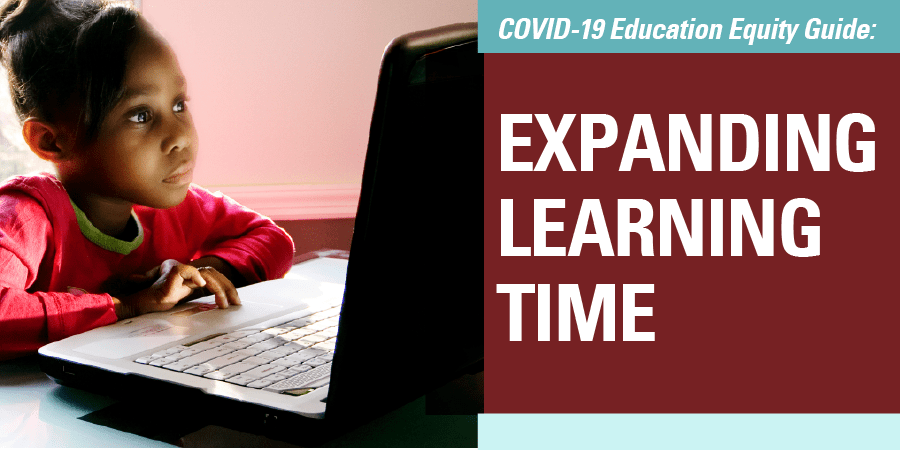COVID-19 Education Equity Guide: Expanding Learning Time
Increasing time and attention for students based on their needs can significantly boost learning for students who are behind.…

Increasing time and attention for students based on their needs can significantly boost learning for students who are behind. The COVID-19 pandemic forced nearly all of our nation’s public schools to close for the last few months of the 2019-2020 school year. Districts and schools found ways to continue student learning in spite of these closures, but by some estimates, students missed 30% to a full year of learning while schools were closed. Families, especially in communities with more students from low-income backgrounds, more English learners, and more students of color, face many barriers to participating in distance learning opportunities, for reasons ranging from inadequate access to technology to competing responsibilities such as jobs or child care that limit the time available to focus on learning. In addition, most students with disabilities missed out on many of the services that they would have received in school, per their federally mandated individualized education program. It is clear that there will be a need to help students, especially our most vulnerable students, catch up for weeks, months, and even years to come. Advocates must prompt their state leaders to support districts and schools in expanding learning time, especially for underserved students, and to make necessary changes to state laws or regulations to allow districts to extend the school year or day. Even if distance learning continues into part or all of the next school year, advocates can urge their state leaders to prioritize the needs of historically underserved students as they make decisions about structuring school time and virtual learning environments.
EQUITY PRINCIPLE: Every student — especially students of color, students from low-income backgrounds, English learners, students with disabilities, and students experiencing homelessness — gets the high-quality instructional time and teacher attention they need through evidence-based approaches that have been shown to combat instructional loss and/or accelerate their learning.
EQUITY ACTIONS:
Fourteen states place parameters around school start and/or end dates, which could hinder districts from extending the school year. Check out this 50-state comparison from Education Commission of the States to find out more about your state’s instructional time policies.
Digital Promise Provides Distance Learning Guidance to Wisconsin Educators
Digital Promise developed this guide for educators in Wisconsin on preparing for and implementing distance learning, specifically when and how to use different instructional formats. The guide details different online and distance learning formats, as well as the pros and cons of each. For example, the resource notes that synchronous learning most closely resembles live classrooms, but requires students to have reliable internet access, which many students – particularly students of color and students from low-income backgrounds – may not have at all or at certain times of day, depending on their home situation or context.